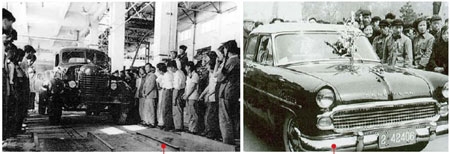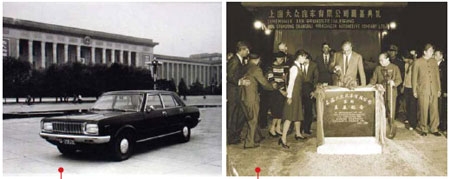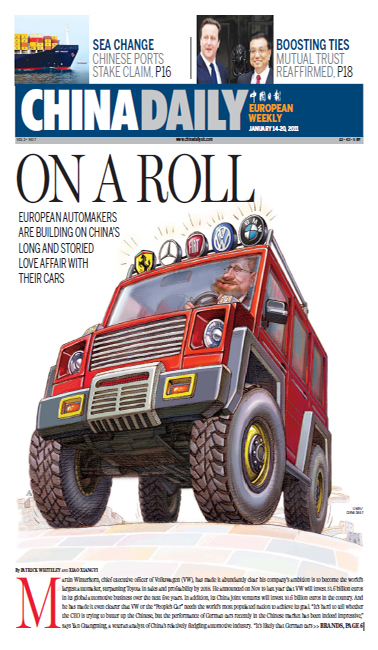On a roll
Updated: 2011-01-14 10:37
By Patrick Whiteley and Xiao Xiangyi (China Daily European Weekly)
Last August, in a bid to improve its situation, PSA Peugeot Citroen clinched a deal with Chang'an Motor Corp to form a second joint venture.
Claude Vajsman, the French carmaker's China CEO, says the company expects the new tie-up with Chang'an to help it reach its target of selling 2 million vehicles annually and have 10 percent of the overall auto market in China by 2020.
But Yan says this easier said than done. "The culture of the company also matters rather than simply good-looking balance sheets," Yan says.
Chotai says in order for European carmakers to continue their success, they need to keep focused.
"They need an array of products at different price points which targets the more affluent and sophisticated buyers as well as the no frill budget products which can compete on price with Chinese brands in the price sensitive segments."
Over the next decade, he sees the development of Chinese brands and intense pressure from Japanese and Korean plus Ford/GM as bumps on the road for European carmakers.
"They have to know how to manage risks of technology pilferage to their JV partner and still maintain good relations with them," he says.
"And also how to manage the expansion process to take fulladvantage of growth without over-extending themselves and be ready for a possible slowdown."
China embraces the auto: A TIMELINE
|
 Left: 1956-First modern automobile factory First Automobile Works (FAW) begins production. Right: 1968-Dongfeng Motor Corp begins. |
1958: First light-duty truck (NJ130) is produced in Nanjing and is called Yuejin (meaning Leap Forward).
1958: Nanjing Automobile Works, previously a vehicle servicing unit of the Army, is established and makes trucks.
1959: Chairman Mao Zedong orders FAW to make a Chinese luxury car for political leaders and VIPs. The Red Flag is born.
Late 1950s / '60s: More automobile factories are set up in Nanjing, Shanghai, Jinan and Beijing. The companies have evolved into Nanjing Automobile (Group) Corp, Shanghai Automotive Industry Corp, China National Heavy Duty Truck Group and Beijing Automotive Industry Holding Corp.

Left: 1974-Beijing Automotive produces a sedan, which is equipped with a 2.7 V6 engine. Only 134 vehicles are made. Right: 1984-Volkswagen signs 25-year contract to make passenger cars in Shanghai. |
1980s: The Fiat 126P is imported from Poland at a time when privately owned cars are allowed for the first time in China. Previously, all vehicles had to be registered with a government-owned work unit. The car costs 5,000 yuan, considered a fortune at the time.
1983: American Motors Corp (AMC, later acquired by Chrysler Corp) signs first joint venture with Beijing Automotive Industry and the Beijing Jeep Corporation.
1985: Volkswagen makes the Santana. More than 3 million units are sold between 1985 and 2010.
1985: PSA Peugeot/Citroen agrees to set up a joint venture with Dongfeng.
1989: The Audi 100 rolls off FAW's factory lines and quickly captures the attention of central and local government officials. Under regulations, government bodies have to buy a locally manufactured car and Audi takes advantage of this.
Paper's Digest

Posh parade
Luxury carmakers are gearing up for rich pickings in China.
Preview of the coming issue
Driving ambition
Sea Change
Specials

Hu visits the US
President Hu Jintao is set for a state visit to the United States from Jan 18 to 21.

Royal ring
British royal engagement ring spurs demand for chinese replicas.

Stars on horizon
The 'longlist' for Literary Prize raises strong hopes about future of East Asian writers of English books.
